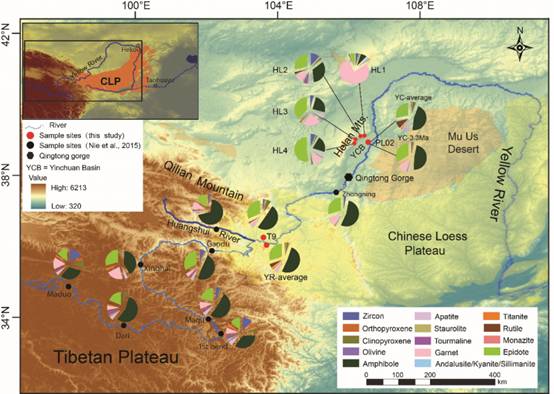Recently, the research team led by professor Junsheng Nie from the College of Earth and Environmental Sciences, Lanzhou University and their collaborators published two articles in the journalGeophysical Research Letters, which further confirmed the possible close relationship between East Asian climate change—the evolution of the Yellow River—the source change of the Loess Plateau and the formation of northern deserts.
The researchers proposed that the strengthening of the East Asian monsoon has increased erosion in the region, allowing the region to provide more dust, which challenged the previous research conclusions that the acceleration of dust accumulation in Asia was regarded as an indicator of the dryness in central Asia. Besides, they found significant differences inprovenancebetween late quaternary loess and early quaternary loess. The late quaternary loess and the upper reaches of the Yellow River have similar geochemical characteristics. According to these findings, theysupposed that the expansion of the upper reaches of the Yellow River during the late Quaternary period caused the increase of the river sediment transport capacity, which may provide additional sources for the Western Mu Us Sand and the Loess Plateau.
To test the deduction, the team studied heavy mineral assemblages in the boreholes of the Yin Chuan Basin and the Yellow River terraces. Combined with previous research results, these investigation data indicated the further expansion of the upper reaches of the Yellow River area causing the increases of the river sediment transport capacity, which proved the supposition. Another article reported the team's new evidence of central Asian dryness from inland Central Asia and showed that significant dryness occurred in the Western Tsaidam Basin and the Eastern Tarim basin during the late Pliocene (3.3Ma), which is quite different from the deep-sea dust records and the Loess Plateau records. This preliminary result further calls for careful interpretation of the climatic significance of dust accumulation rate changes in Asia.
In addition to these achievements, the research team alsopublished articles in the journalGeological Society of America Bulletin,Geochemistry,GeophysicsandGeosystems. The research team has made a series of advances with the fund from the Second Tibetan Plateau Scientific Expedition and Research and other projects.
Articles connection:
Testing Contrasting Models of the Formation of the Upper Yellow River Using Heavy‐Mineral Data From the Yinchuan Basin Drill Cores
Central Asian Drying at 3.3 Ma Linked to Tropical Forcing?
Magnetic polarity stratigraphy, provenance, and paleoclimate analysis of Cenozoic strata in the Qaidam Basin, NE Tibetan Plateau
Detection of Strong Precession Cycles from the Late Pliocene Sedimentary Records of Northeastern Tibetan Plateau
Provenance Control on Chemical Weathering Index of Fluvio‐Lacustrine Sediments: Evidence From the Qaidam Basin, NE Tibetan Plateau

Figure 1. Comparison of heavy mineral assemblage of Yinchuan basin boreholes, Lanzhou terraces and the upper reaches of the Yellow River (Wang et al., 2019GRL)

FIG. 2. Comparison of paleoenvironmental substitution index changes and possible driving mechanism in Qaidam basin and Tarim basin (Su et al., 2019GRL)